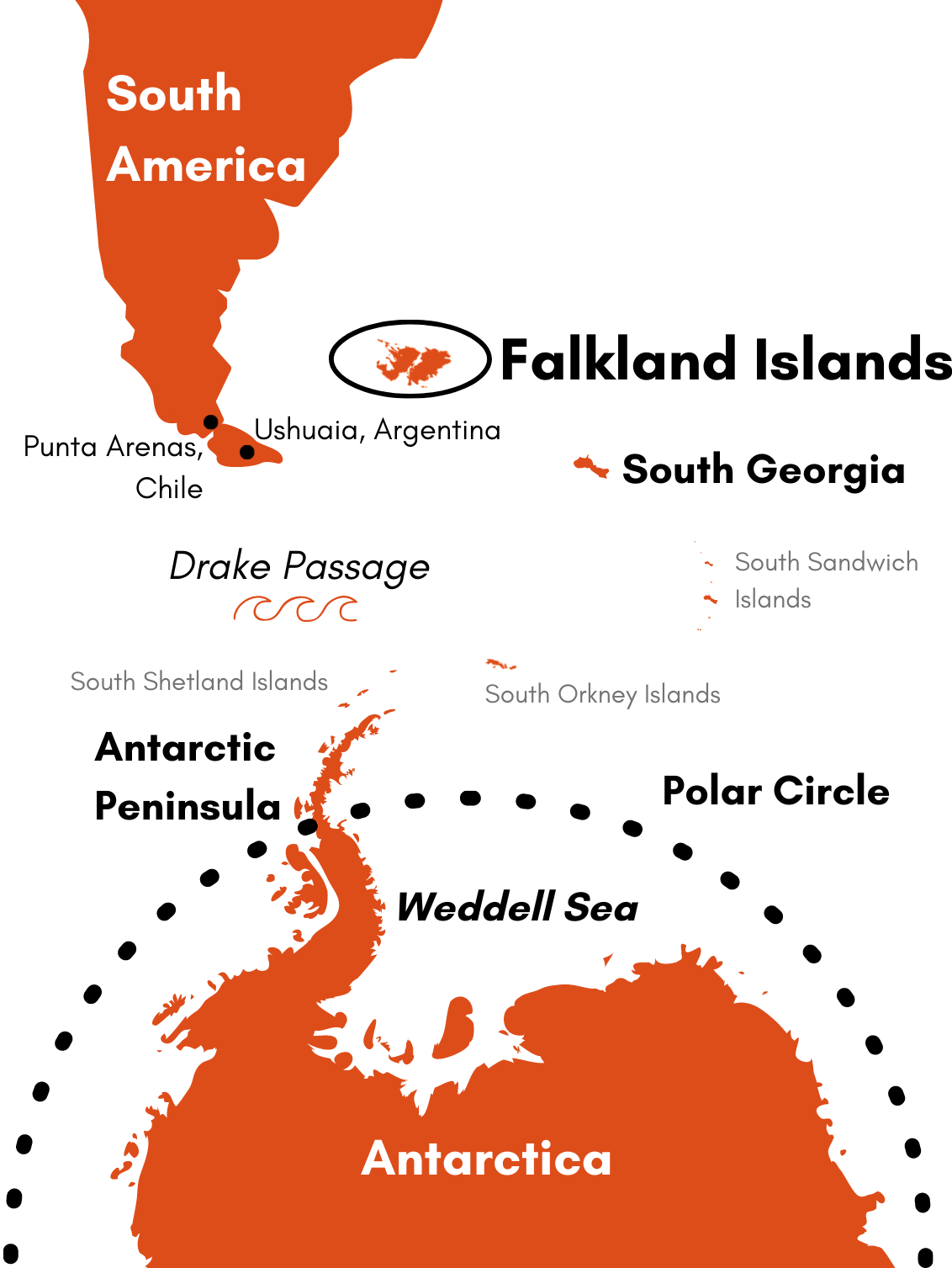The Falkland Islands, known as the the Islas Malvinas in Argentina, are made up of two main islands and over 750 smaller islands. They are located almost 500 km off the eastern coast of South America on the Patagonian Shelf. The Falklands are known for their avian wildlife as well as their dramatic history. Sovereignty disputes between the United Kingdom and Argentina led to the 1982 Falklands War.
Falkland Islands Overview
Geography & Climate
The Falkland Islands are where the cold southern waters from Antarctica mix with the warmer waters from the Atlantic Ocean. They are mountainous and beautiful, with the two principal islands separated by the Falkland Sound.
The islands have strong westerly winds year round and there are long hours of daylight during the summer months when voyages are exploring. The warmest months are January and February with an average temperature 9 °C (34 to 36 °F).
Wildlife
The Falkland Islands are home to a large variety of birds including 5 different penguin species and some of the largest Albatross colonies on the planet. Elephant Seals, fur seals and many types of whales frequent the waters around the islands. Unfortunately, the islands’ only native mammal became extinct in 1876. The Falkland Islands Wolf was hunted extensively for its fur.
Activities
Key activities on offer in the Falklands include bird watching, walks along the coastal cliffs and on the beaches, exploring historical sites and visiting Port Stanley. You can expect strong winds and beautiful scenery during your exploration of the islands.
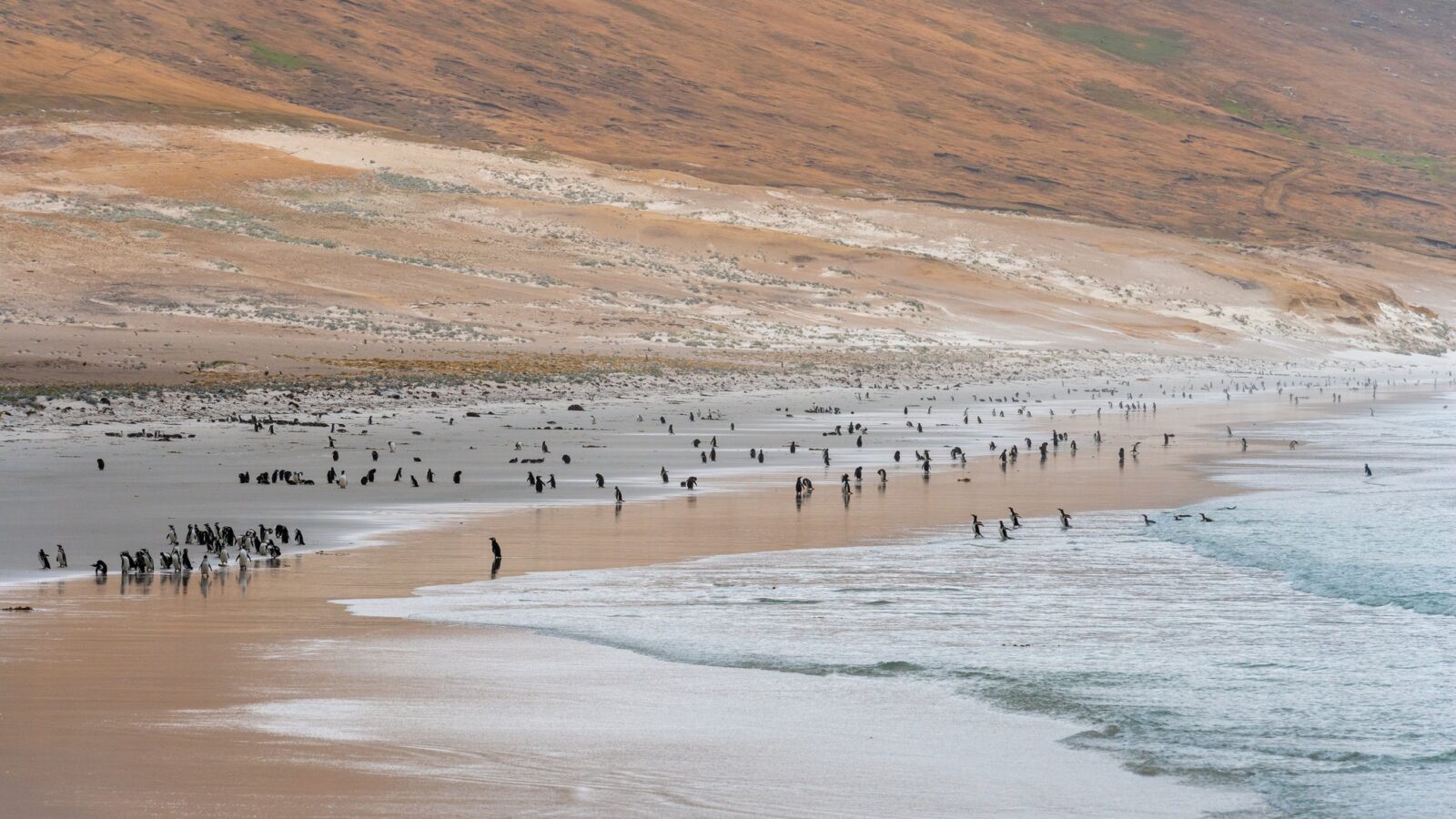
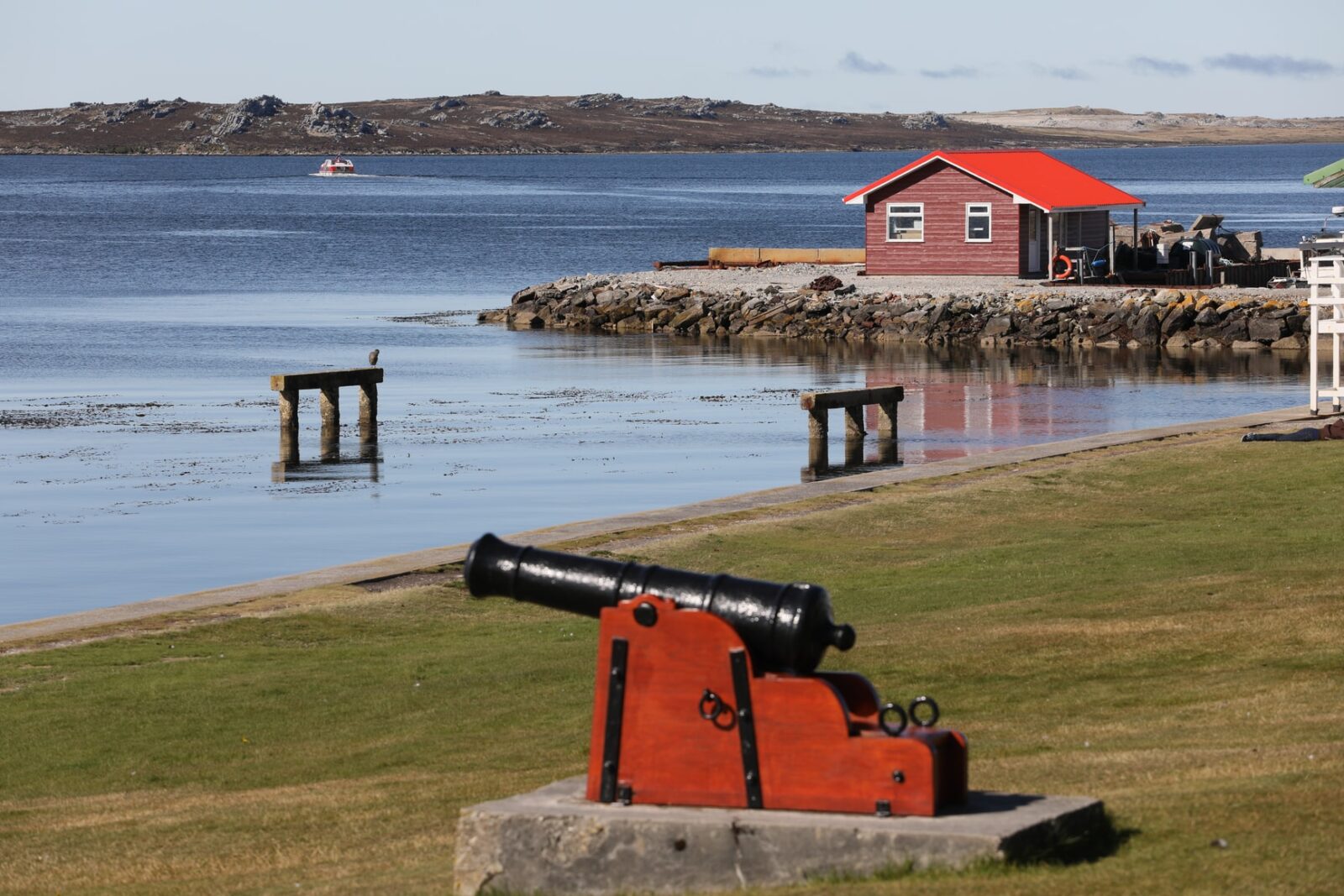
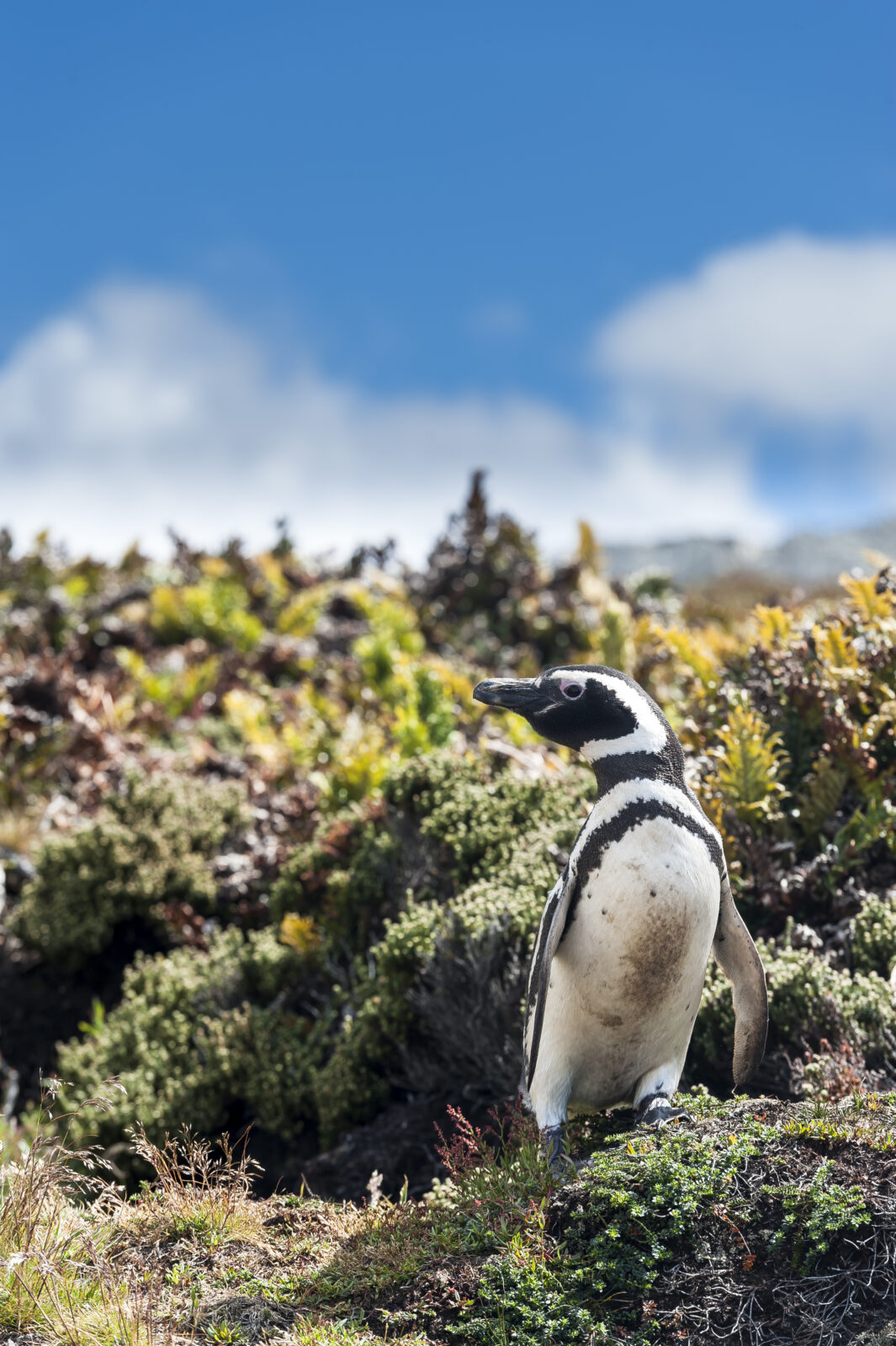
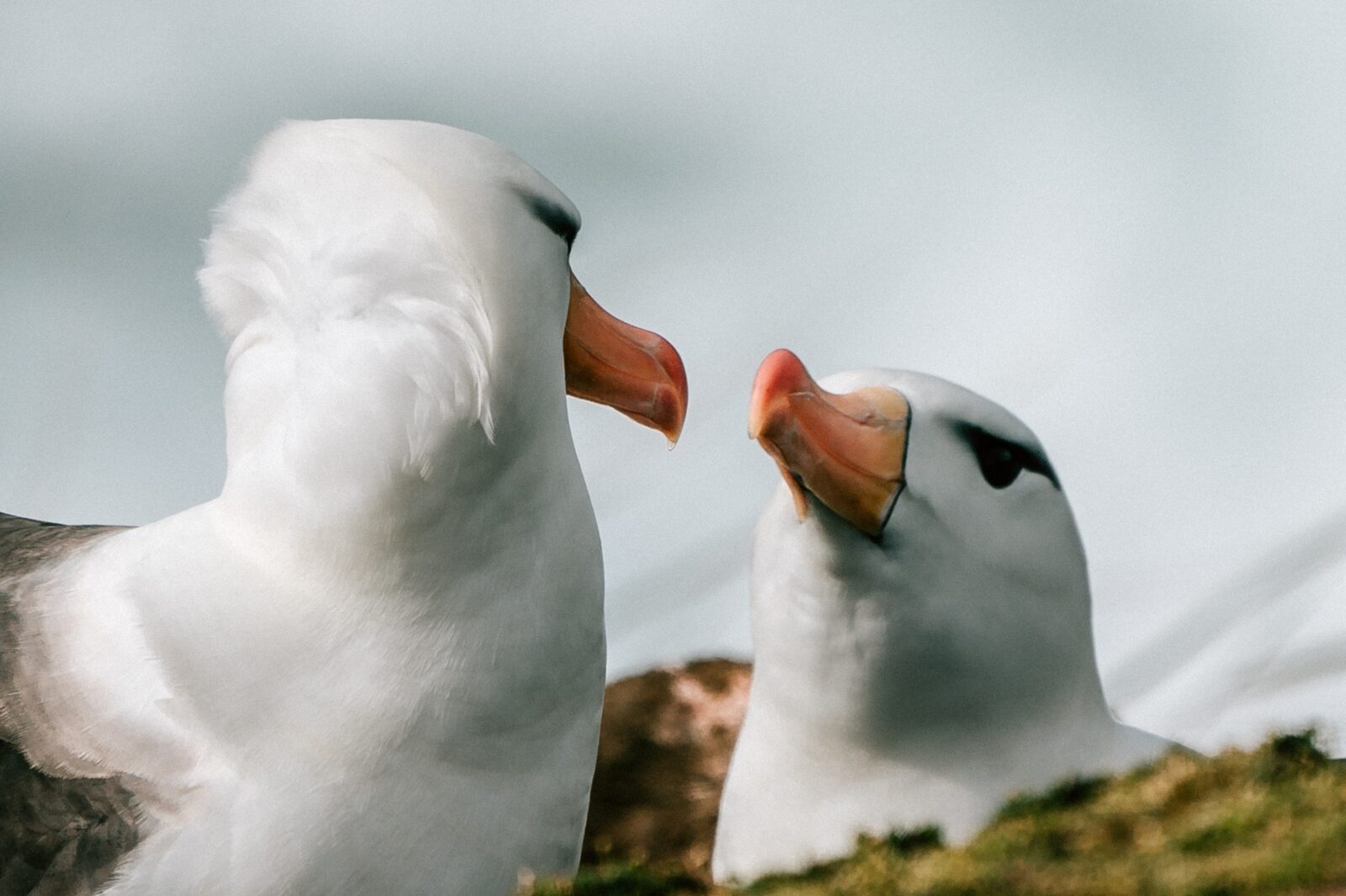
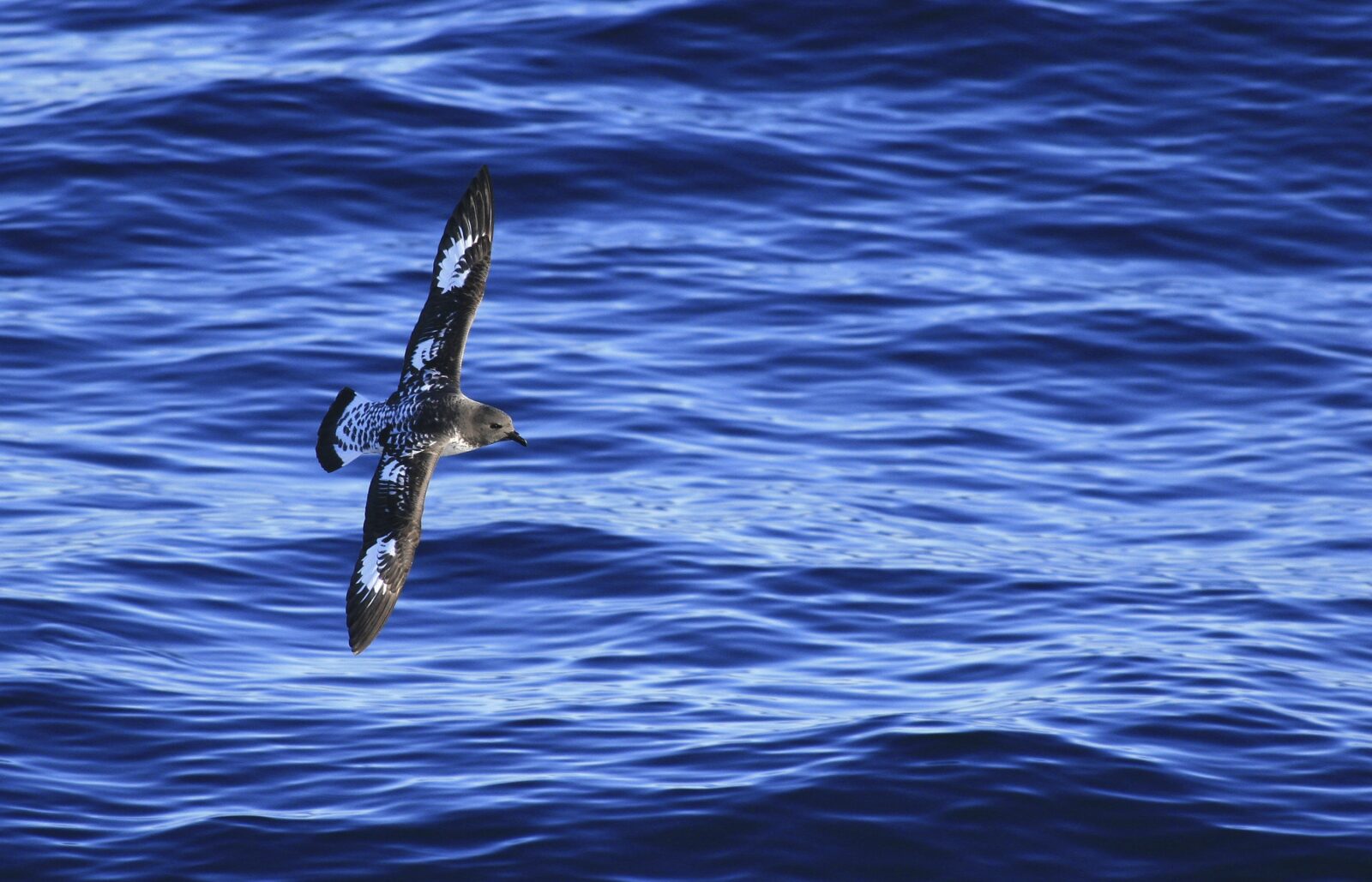
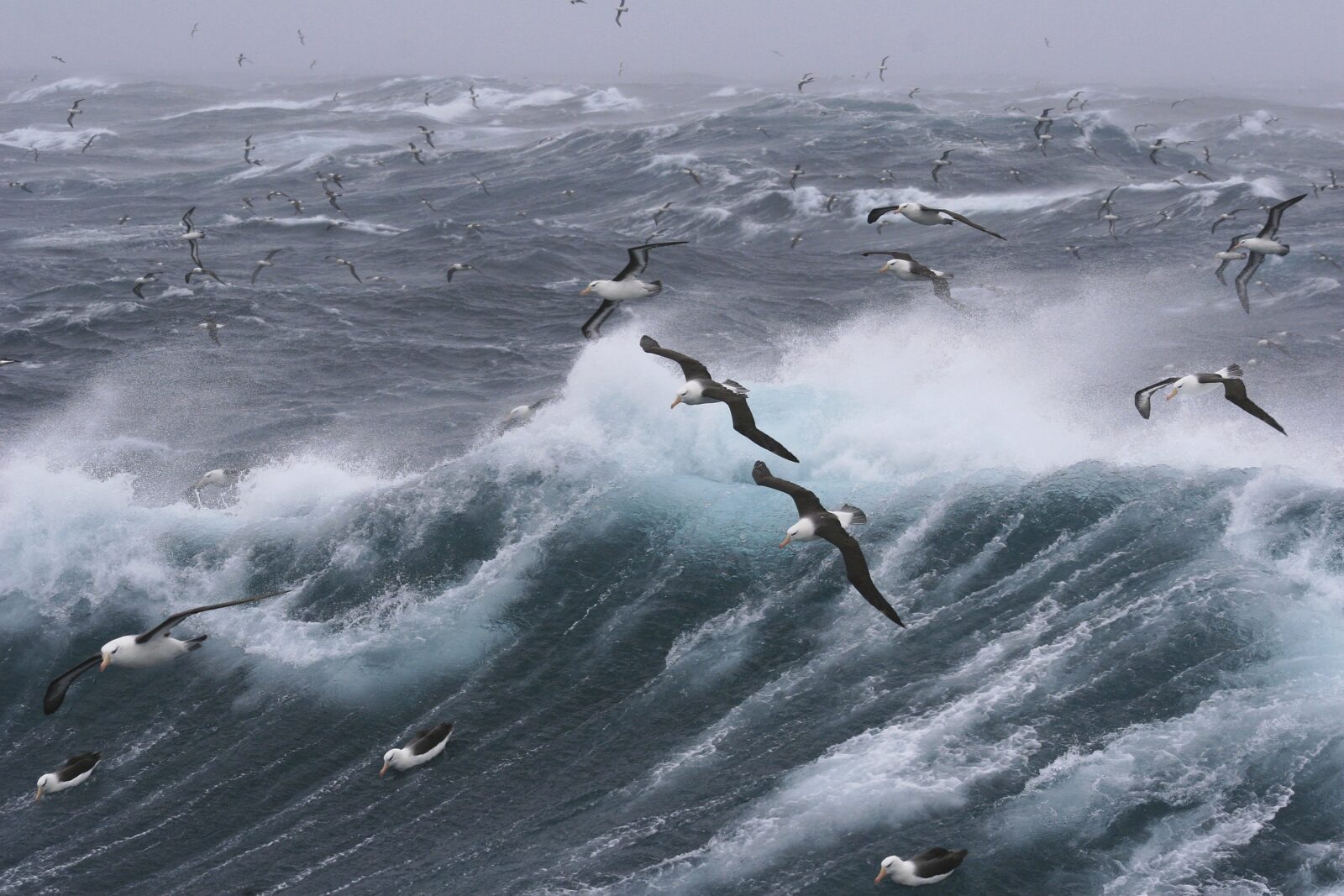
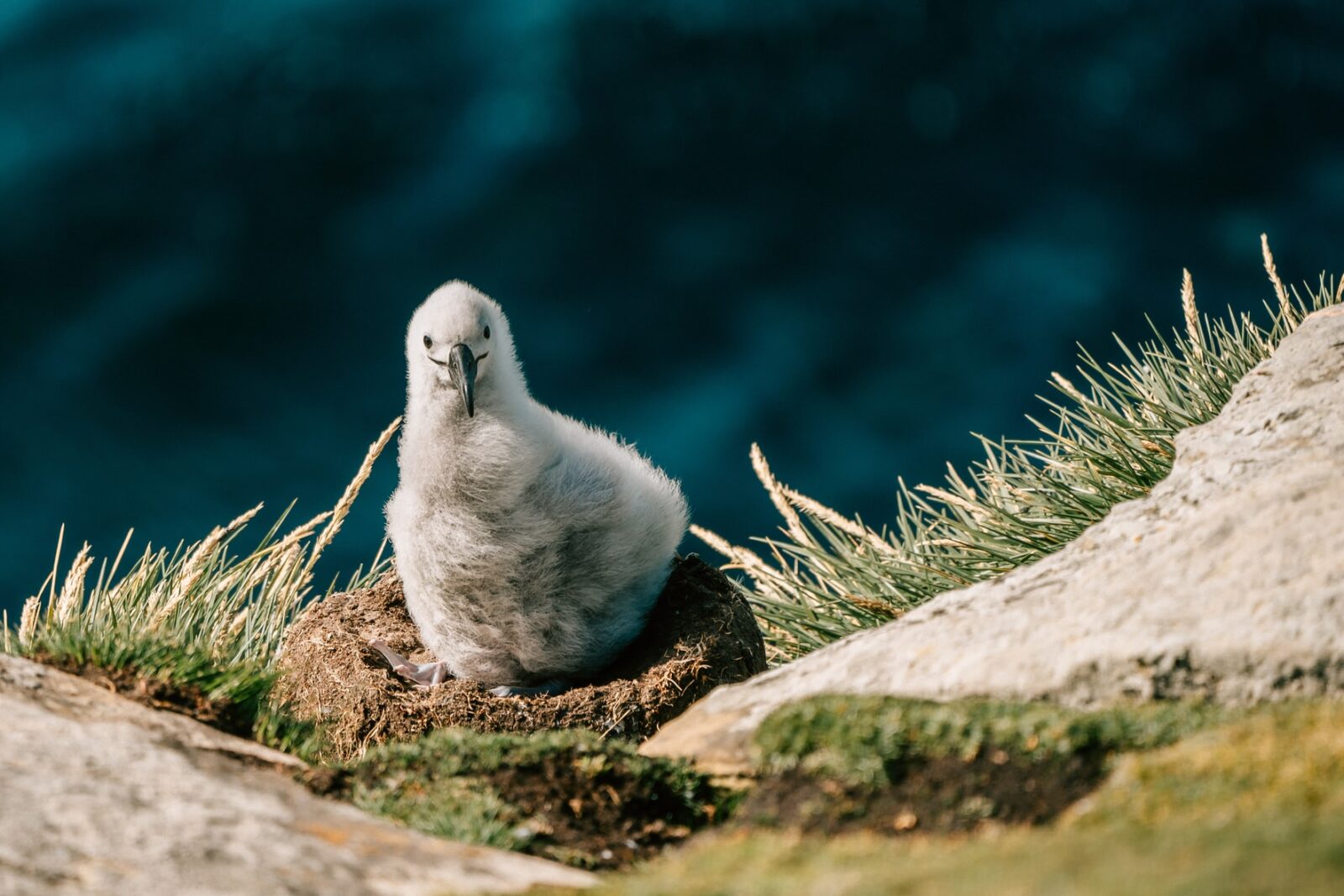
Location Highlights
Vast open spaces, a broad variety of spectacular wildlife and white sandy beaches will greet you in the Falklands. Known as a birdwatcher’s paradise, over 80% of the world’s population of black-browed albatross can be found on Steeple Jason Island. The most famous of the Falklands’ bird life are the penguins – the Magellanic, Gentoo, Rockhopper and King Penguin.
The islands are considered the most important world site for Rockhopper Penguins. Fur Seals, Elephant Seals and Sea Lions can also all be found breeding on the islands’ many shores. The Falklands are one of the last “off the beaten track” destination and is a true wildlife haven.
Albatross Colonies
The Falklands are home to Black-browed Albatross colonies on steep cliffs at 16 sites in the Falklands.
Adults pair for life and return to use the same pot-shaped nest each September, laying a large single egg in October which hatches in December. Chicks remain in the nest until they fledge in early April.
Adults feed on fish, squid, octopus, crustaceans and jellyfish. In some areas they are drawn towards discards from fishing fleets, which puts them at risk of being killed on long-line fishing hooks.
